Gentiana, Gentian, Long Dan Cao 龙胆草Ghaafis, Jantiana (Unani)related species: –In TCM G. gabra (Long Dan Cao) –In Ayurveda, G. kurroo (Trayamana) –In Tibet G. robusta (Kyi lce) |
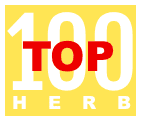
|
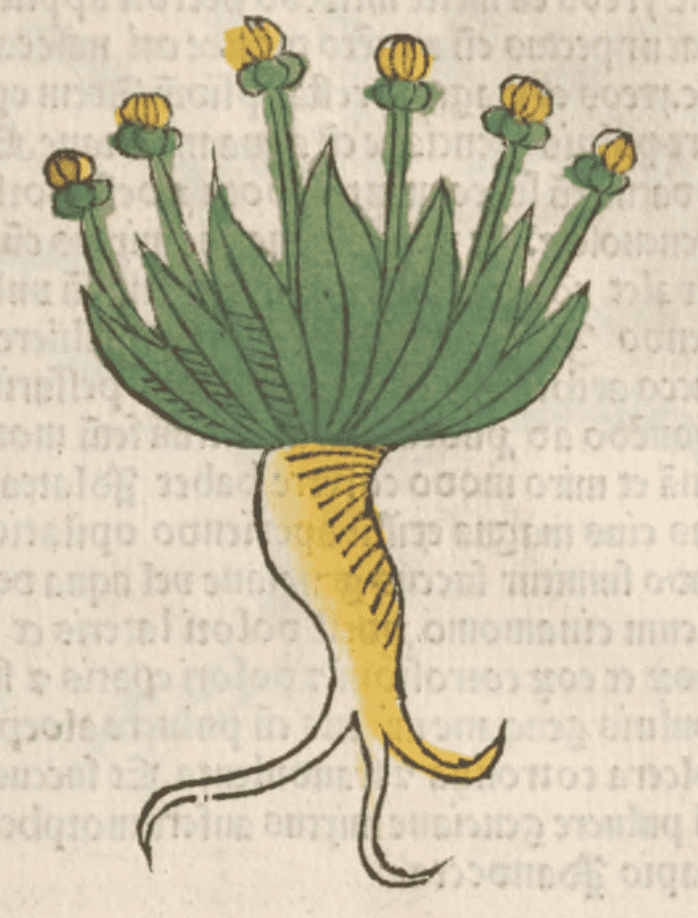 Herbarius latinus, Petri, 1485
Herbarius latinus, Petri, 1485
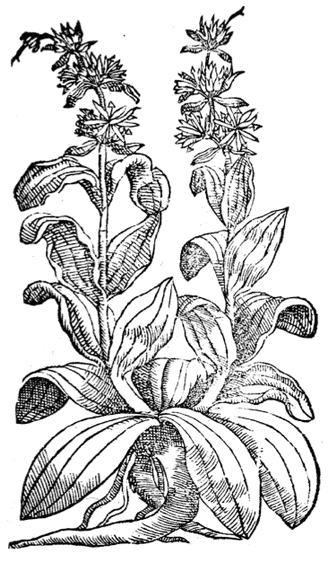
|
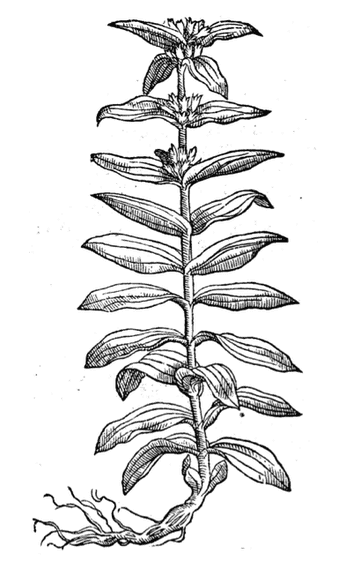
|
Della Materia Medicinale, Andrea Valuassori, 1562
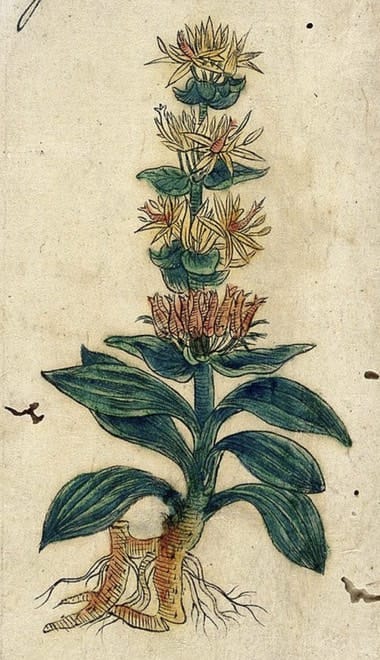 Japanese Herbal, 17th century (Welcome)
Japanese Herbal, 17th century (Welcome)
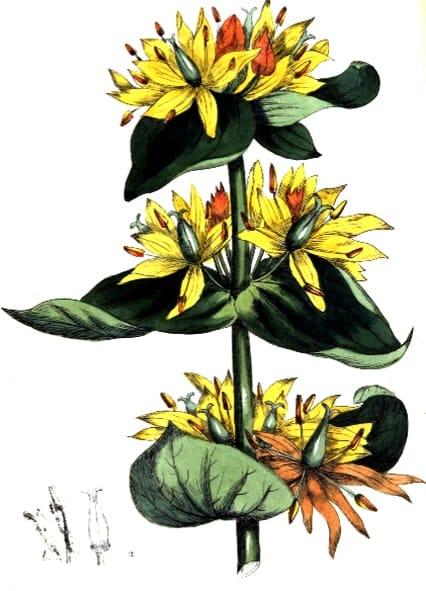
|
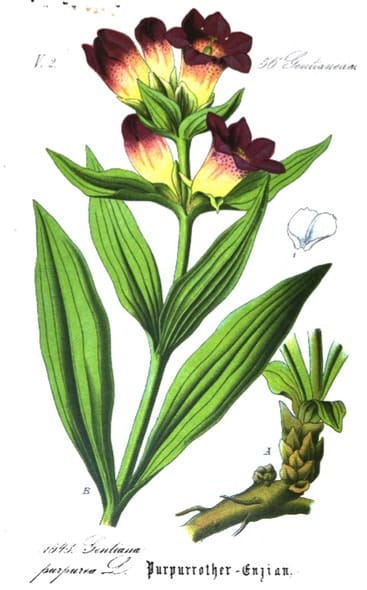
|
|
Gentiana lutea Flora Medica, Royal College of Physicians, 1829 |
Gentiana purpurea Flora von Deutschland (16), Kohler, 1884 |
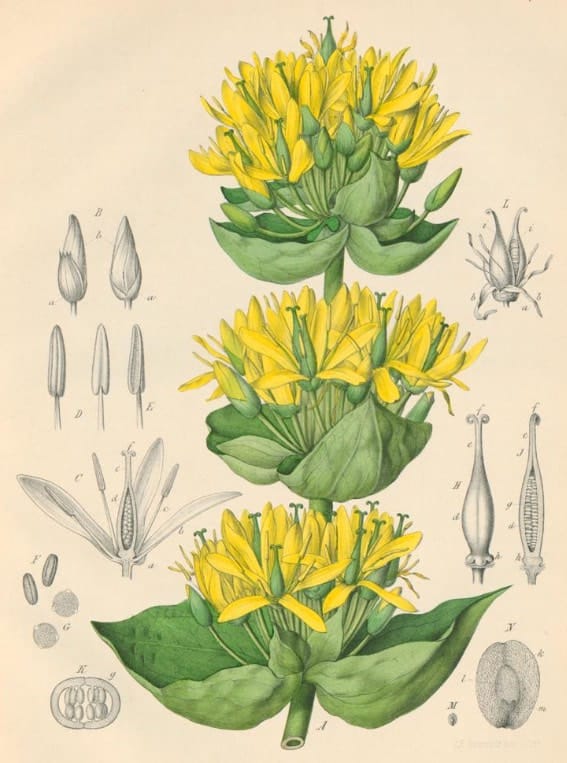 Gentiana lutea
Gentiana luteaAtlas der Officinellen Pflanzen, Berg & Schmidt, Leipzig, 1893
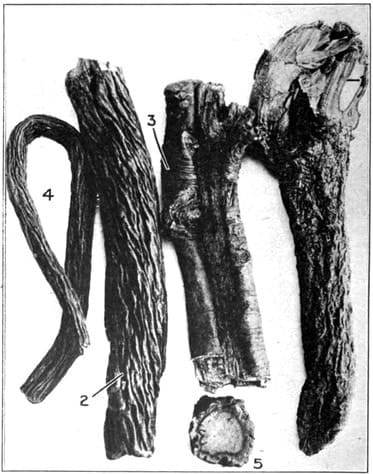 YELLOW GENTIAN ROOT
YELLOW GENTIAN ROOT1. Root with numerous leaf bases. 2. Deep wrinkles. 3, Annulate rhizome portion.
4. Curved and twisted root. 5, Cross-section of root showing dark cambium zone.
Squibb’s Atlas of the Official Drugs, Mansfield, 1919
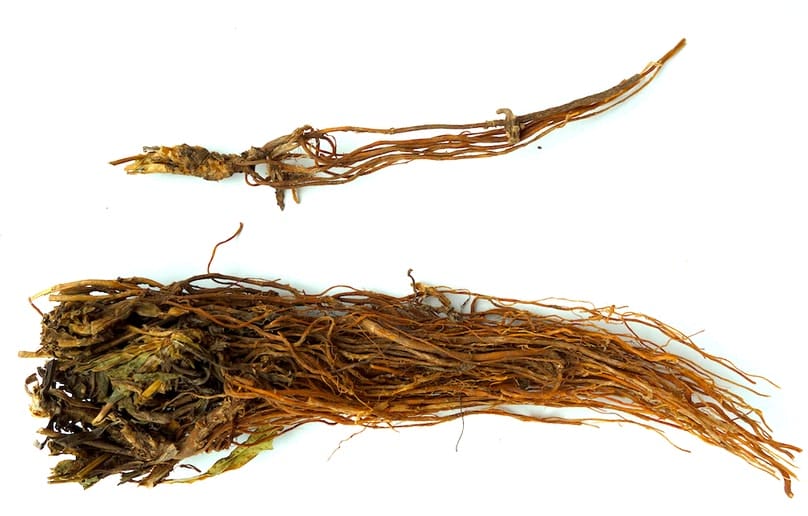 Wild Sichuan Gentian root (Adam, 2016)
Wild Sichuan Gentian root (Adam, 2016)Botanical name:
Gentiana spp.
In the Western tradition, the following species are most commonly used.
- G. lutea (official European species)
- G. purpurea (used in Northern Europe synonymously, regarded as equally strong)
- G. punctata (used in parts of Europe)
- G. pannonica (used in parts of Europe)
Many Gentian species have been used similarly in the various systems:
- TCM: G. scabra, G. triflora, G. manshurica, G. rhodanta, G. rigescens (Long Dan Cao) and others are used similarly. When G. rhodanta (Hong Hua Long Dan) is used, the whole plant is used.
- Ayurveda: G. kurroo (Trayamana)
- In Tibet, a white (Kyi lce dkar po) and a black (Kyi lce nag po) type are recognised:
- White: G. robusta, G. crassicaulis, G. macrophylla, G. tibetica
- Black: G. tianschanica, G. hexaphylla, G. straminea, G. triflora, G. oliveri
- White: G. robusta, G. crassicaulis, G. macrophylla, G. tibetica
- Unani: G. olivierii (Ghaafis) and apparently some species used in Europe.
Parts used:
Root
“The best Gentian is its Roman variety which is dark red in colour and very hard. It is a wood and the root is thick like a finger. It may be big or small (in size). It is dark yellow in colour and its broken piece resembles rhubarb.” (Avicenna)
Temperature & Taste:
Cold (Warm in the West), dry. Very Bitter
“Hot in the Third degree and Dry in the Second degree”. (Avicenna)
Classifications:
2A APERIENT MEDICINES. 2B ATTENUATERS. 2F. PURIFYING. 2M. DRAWING. 2T. GLUTINATE
3B. FEBRIFUGE & ANTIPYRETIC. 3C. ALEXIPHARMIC
4e. STOMACHIC. 4f. SPLENETIC. 4g. HEPATIC. 4i. UTERINE
TCM:
B. Clears Heat & Damp
Uses:
1. Clears Heat and Damp, Opens Obstructions (West, TCM, Ayurveda, Tibet):
-clears Bile (Choler)
-Jaundice, Scrofula, Cholecystitis, and Hepatitis
-itching of the Genitals
-Eczema, Dermatitis, Itching, Scabs, fretting Sores and Ulcers
-Leprosy, malignant Ulcers (Ayurveda, Sushruta)
-Liver Headache; red, sore, and itchy Eyes
-Cramps, Convulsions, Epilepsy, Vertigo
-Infantile Seizures due to Fright (Ben Cao Gang Mu)
-“useful for cold hepatic and splenic swellings particularly when a dose of two dirham (7 gm) is taken with wine”. (Avicenna)
-‘Sense of depression referred to epigastric region, and associated with sense of physical and mental weariness’. (Scudder)
2. Clears Heat, Resists Poison (West, TCM, Ayurveda, Tibet):
-Alexipharmic
-Fevers (esp Intermittent); Epidemic disease; Plague (West, Ayurveda)
-bites of Rabid Dogs and other venomous creatures
-“a good drug to be used in Scorpion Bite. Two dirham (7 gm) of Gentian with wine is useful in cases of the stings by all kinds of Insects, bites by Rabid Dogs and other beasts. (Avicenna)
-‘Hectic Fever and chills due to Yin deficiency’. (Shen Nong Ben Cao)
-‘pain in the throat and stopping night sweating due to attack of pathogenic Wind and Heat’. (Li Shi Zhen)
3. Benefits the Stomach, Stimulates Digestion:
-benefits a weak Stomach
-“rectifies the stomach ailments attributed to Coldness”. (Avicenna)
-‘Strengthens the Stomach exceedingly, helps digestion… restores the appetite’ (Culpeper)
-‘for such as have evil Livers and bad Stomachs’. (Gerard)
-Malnutrition (Da Ming)
-small doses and short-term use for this function; mostly in powders
4. Clears Heat and Damp, Promotes Urine:
-Edema
-difficult, painful or burning Urination; Gravel
5. Clears Heat and Damp, Eases Pain:
-chronic Joint pain with Heat and Inflammation; Pain and numbness of the Joints
-Arthritis, Rheumatism
-Numbness, Lameness, Aches and Pains
-‘weariness and cold lodgings in the Joints’. (Culpeper)
6. Moves the Blood, Promotes Menstruation:
-it ‘dissolveth and scattereth Congealed Blood’ (Gerard); usually taken in wine
-Amenorrhea; suffocation of the Womb
-Promotes Birth, expels Afterbirth
-root made into a pessary expels After birth or a Dead Child (Dioscorides; Avicenna)
-tincture, decoction in wine, or the wine-prepared root is best for this function
-“also useful for the person who has fallen down from a high place”. (Avicenna)
7. Kills Worms (West, Ayurveda, TCM)
-‘effective for treating Gu Du (diseases from Parasites) (Shen Nong Ben Cao)
-‘Kills Parasites in the Intestine’ (Ming Yi Bie Lu)
8. Clears Heat, Stops Cough and Wheezing:
-regarded by some older sources as effective for chronic Asthma
-“useful in Pleurisy”. (Avicenna)
9. Externally:
-Wounds
-Ulcers, knots, kernels in the Neck (Pemell, 1652)
-root or especially the juice for Ulcers (Dioscorides)
-“Heals the corrosive Wounds and Ulcers”. (Avicenna)
-powder is good for foul, putrid, rotten ulcers, even Running, Fistulous and Cancerous Ulcers (Pemell, 1652)
-Bruises, mix the powder with oil and apply
-Arthritis and Neuralgia, root is steeped in alcohol and applied topically
-applied with Theriac to Rabid Bites
-root is chewed to help stop Smoking
-root powder or infusion has been applied to infants thumbs to stop thumb-sucking
-eye preparations for red and inflamed eyes, conjunctivitis (Avicenna)
Dose:
1. Small doses stimulate digestion and work as a warming, stimulating digestive tonic in the short term.
2. Large doses have a draining and purging effect, and can reduce heat
3. In Cold conditions, and to move the Blood, it is taken with wine
4. In Heat conditions, take with Water, or use the Decoction
Powder: 1–3 grams (traditionally 1 scruple–1 dram). Large doses of up to 7 grams are used for Hepatic swelling, Venomous Bites, Pleurisy etc.
Decoction: 3–9 grams (TCM and West; 1–3 drams was used in the West)
Comment:
While the Chinese Gentian is regarded as one of the Coldest medicines in the Materia Medica, the European Gentian was accounted warm, as it still is in Unani. Despite this, it was used to clear Bile and was regarded as an important medicine to ‘open obstructions’ of the Liver. Nevertheless the use of Gentian and Gentiana Long Dan Cao can be considered synonymous.
Preparations:
1. Dry-Fried Gentian:
Pieces of Gentian root are dry-fried in a wok until scorched but not charred, then sprayed with water to stop the burning. The pieces are then dried and kept for use.
This preparation is less cooling and the bitter nature is reduced. It is used to help Gentian enter the blood to cool the blood and stop bleeding. But is also less harsh on the Stomach and Spleen and so is better suited to those with digestive weakness.
2. Wine-fried Gentian:
Pieces of Gentian root are sprayed with alcohol (Rice spirit), then dried in an oven or by dry-frying in a wok.
This preparation is less cold, and better to open obstructions. So for example, it is used for Liver heat conditions with Qi or Blood stagnation. It also has the effect of raising the effect of the herb to treat heat and inflammation in the head.
3. Licorice-prepared Gentian:
The cleansed root is soaked overnight in a strong Licorice decoction, then dried in the sun.
This moderates the coldness, lessens the bitterness and is therefore better for those with a weak Stomach.
4. Fermented Gentian:
The Western Gentian was often fermented by being left in mounds which are turned regularly.
This makes it less Cold and Bitter and more gentle on the Stomach.
Correctives:
1. Licorice
2. Orange peel
3. Cardamon
4. Coriander seed
5. Rose corrects the harmful effects on the Testes (Unani)
Substitutes:
1. Swertia
2. Centaury
3. One and a half times Asarum, half the amount of Caper root bark, equal part of Birthwort (Unani)
4. “Indian Valerain one and a half time of its weight and the root-bark of Caper and Celery by half of its weight act as its substitute”. (Avicenna)
5. In Lung disease, Asplenium scolopendrium can be used in place of Gentian. (Gentian has a detrimental effect on the Lung in Unani medicine)
Main Combinations:
To move the herb outward, it is often combined with Bupleurum Chai Hu (TCM)
Liver and Gall Bladder:
1. To clear Heat from the Liver, for Damp-Heat, and to open Obstructions:
i. Gentian with Centaury.
ii. Gentian with Bile
iii. Gentian with Hops, Bile
iv. Gentian with Rhubarb
v. Gentian with Chicory, Camomile
vi. Gentian with Bitter Orange peel
vii. Gentian with Wormwood, Aniseed
viii. Gentian with Calamus, Wormwood, Juniper berry, Bay berry (Memorial Pharmaceutique, 1824)
ix. Gentian with Greater Cardamon, Wormwood, Costus, Agrimony, Bitter Almond, Black Pepper, Aniseed (as in Decoction for the Liver of Nicholas)
x. Gentian with Galangal, Calamus, Zedoary, Blessed Thistle, Orange peel, Rhubarb, Lesser Cardamon (Pharmacopee Usuelle, Louvain, 1821)
xi. Gentian with Avens root, unripe Orange, Wormwood, Fumitory, Blessed Thistle, Buckbean, Yarrow, Camomile, Lesser Centaury, as a tincture. (Pharmacopoeia Generalis, 1783)
2. Liver pain:
i. Gentian, Cinnamon (Herbarius latinus, Petri, 1485)
ii. and Jaundice, Gentian with Yellow Chebula, Aloe, formed into pills with Celery juice (Pills of Gentian, Unani)
3. Liver Hardness, Gentian, Pepper (10 parts each), Costus, Indian leaf, Indian Spikenard, Rhubarb (8 parts each), Honey sufficient to form an Electuary. Dose: 1 dram in Rue infusion (Syrian ‘Book of Medicine‘, Budge, 1913)
4. Jaundice:
i. Gentian with Wormwood
ii. Gentian with Centaury, Barberry bark, Peppermint
iii. Gentian, Wormwood, Rhubarb, Aniseed
Digestion:
5. Digestive debility with Liver congestion:
i. Gentian with Lesser Cardamon
ii. Gentian with Lemon peel, Cinnamon
iii. Gentian, Orange peel, Peppermint
iv. Gentian with Calamus, Dandelion, Centaury and Wormwood
6. Digestive weakness with defective bile secretion, Gentian extract, Centaury extract (2 drams each), Bull Bile, thickened (½ oz.), Rhubarb powder (sufficient to form pills of 2 grains each), dust with Cinnamon. Dose: 8–10 pills, three times daily. (Sobernheim, 1840)
7. Atony of the digestive organs:
i. Gentian (3 drams), Orange peel (1 scruple), infuse in boiling water (1 lb.). Strain, add Tincture of Orange peel (2 drams). Dose: half cupful three times daily. (Sobernheim, 1840)
ii. Gentian (2 oz.), Orange peel (1 oz.), Cinnamon bark (1 dram), infuse in Spanish Wine for 24 hours, strain. Dose: 1 tablespoonful, 2–3 times daily.
iii. Gentian (4 parts), Centaury, Wormwood, Calamus (2 parts each)
8. Aromatic Bitters:
i. Gentian with Calamus
ii. Gentian with Calamus, Galangal, Centaury, Wormwood, Camomile, Stoechas, Caraway seed (as in Aromatic Bitter Decoction)
9. Stomach Powder:
i. Gentian, Amber (10 grains each), Rhubarb (4 grains). Taken as a dose at dinner. (Nouveau Formulaire Medicale et Pharmaceutique, 1820)
ii. Arum root, Gentian, Calamus (1 oz.), Ginger, Orange peel, Potassium sulphate (½ oz. each), Oil of Caraway (½ dram). Mix. (Hufeland)
Fever and Poison:
10. Fever: Gentian (½ oz.), Bistort, Peony (2 drams each). Used in place of Cinchona when that has failed. (Ratier)
11. Intermittent Fever:
i. form Pills with Gentian, Salt of Wormwood and Syrup of Dried Roses
ii. Gentian with Wormwood, Catechu, Lesser Centaury, Cinchona (Formulaire Magistral et Memorial Pharmaceutique, 1823)
12. To protect from infection and Poison:
i. Gentian with Bay berry, Myrrh and Round Birthwort (as in Diatessaron)
ii. Gentian with Aloe, Rhubarb, Saffron, Myrrh, Zedoary, Agaric (as in Pills for Pestilence)
13. Bites of Wild Animals, Gentian, Pepper, with Wine (Dioscorides)
14. Rabid Dog Bites:
i. Gentian (1 dram) take in Carduus Water
ii. Gentian (30 grains), Rue (1 scruple), Pepper (5 grains), take in Angelica Water
iii. Gentian (2 drams), decoct in water and honey, strain, add Myrrh (1 dram), Crabs Eyes burnt (2 drams), mix. Divide into 4 doses to give morning and night. Wash the wounds with Vinegar and Salt Water
Other:
15. Edema, Gentian with Elecampane, Celery root, Asarum, Squill, Wormwood, Agrimony, Parsley seed, Cinnamon (as in Wine for Edema)
16. Pernicious Anemia, Gentian with Agrimony, Celandine, Barberry bark (Wonders in Weeds)
17. Rickets, Gentian with Marshmallow and Comfrey
18. Cough, Asthma, Gentian with Hyssop, Agaric, Mastic (as in Electuary for Asthma of Andrezeos)
19. Chronic Asthma, Gentian, Orris with Licorice (Herbarius latinus, Petri, 1485)
20. Pleurisy, Difficulty Breathing, Gentian, White Pepper (2 drams each), Saffron, Opium, Aniseed (3 drams each), Honey sufficient to form an Electuary. Take as much as a bean with Licorice infusion. (Syrian ‘Book of Medicine‘, Budge, 1913)
21. Phthisis from gross Humors, Gentian, Calamus, Long Birthwort, made into a powder and mixed with Honey of Roses (The Secrets of Alexis, 1615)
22. To strengthen the Heart and resist Poison in Epidemics, Gentian with Tormentil, Orris, Zedoary, Cinnamon, Angelica, Licorice juice
23. Poor nervous tone, Gentian with Valerian and Vervain
24. To benefits Memory, Gentian with Calamus, Indian Spikenard, Siler Montane, Aniseed, Cumin, Caraway, Lovage (as in Powder of Trithemius)
25. To promote Menstruation:
i. Gentian, Pennyroyal, Nigella, Dry Figs, formed into a Suppository. (The Secrets of Alexis, 1615)
ii. Gentian, Southernwood made into a pessary with Mugwort juice and Honey. (Herbarius latinus, Petri, 1485)
iii. Gentian with Calamus, Lesser Centaury, Rosemary (Pharmacopoeia extemporanea, Augustin, 1822)
26. Hysteria, Nervous exhaustion, Gentian with Cardamon, Orange peel
27. Epilepsy, Gentian with Marjoram Water (Herbarius latinus, Petri, 1485)
28. Epilepsy, Apoplexy, Paralysis, Madness, Migraine, Asthma, Gentian with Centaury, Galangal, Cinnamon, Clove, Sage, Rosemary, St. Johns wort
29. Arthritis, Joint Pain:
i. Gentian with Ground Pine, Germander, Rue (as in Powder Against Joint Pain)
ii. Gentian, Round Birthwort, Ground Pine, Germander, Lesser Centaury (equal parts) (Pharmacopoeia Sardoa, 1773)
iii Gentian with St Johns wort, Centaury, Ground Pine, Agaric, Germander (as in Antidote of Seven Things)
30. Rheumatoid Arthritis, Gentian with Agrimony
31. Worms:
i. Gentian with Blessed Thistle
ii. Gentian with Wormseed, Wormwood
32. Conjunctivitis, Gentian with Lawsonia, infused and used as an eyewash (Unani)
33. Corrosive Ulcers, Gentian and Aloe topically (Herbarius latinus, Petri, 1485)
34. White Morphew, Southernwood juice with Gentian powder mixed and applied. (Herbarius latinus, Petri, 1485)
TCM (Long Dan Cao):
1. Liver Heat, or Damp-Heat:
i. Gentiana Long Dan Cao with Scutellaria Huang Qin
ii. Gentiana Long Dan Cao with Bupleurum Chai Hu, Gardenia Zhi Zi
iii. with red eyes, hypertension, Gentiana Long Dan Cao with Self Heal (Xia Ku Cao), Scutellaria Huang Qin
iv. to purge Liver Heat, Gentiana Long Dan Cao, Gardenia Zhi Zi, Coptis Huang Lian, Scutellaria Huang Qin, Aloe (Lu Hui), Rhubarb (Da Huang) (as in Dang Gui Long Hui Wan)
2. Jaundice from Damp-Heat:
i. Gentiana Long Dan Cao with Artemisia Yin Chen Hao
ii. Gentiana Long Dan Cao with Gadenia Zhi Zi, Rhubarb (Da Huang), Imperata Bai Mao Gen (as in Long Dan San)
3. Herpes or Viral Hepatitis, Gynostemma Jiao Gu Lan with Gentian (Long Dan Cao), Scutellaria Huang Qin
4. Genital Itching and foul Leukorrhea from Damp-Heat:
i. Gentiana Long Dan Cao with Phellodendron Huang Bai, Plantain seed (Che Qian Zi)
ii. Gentiana Long Dan Cao with Water Plantain (Ze Xie), Plantain seed (Che Qian Zi), Akebia Mu Tong
iii. Gentiana Long Dan Cao with Phellodendron Huang Bai, Sophora Ku Shen
iv. Gentiana Long Dan Cao with Alum externally as a wash
5. Childhood High Fever with Convulsions, Gentiana Long Dan Cao with Indigo (Qing Dai), Coptis Huang Lian, Bezoar (Niu Huang)
6. Goiter, Gentiana Long Dan Cao with Sargassum Hai Zao, Clam Shell (Hai Ge Ke), Tetrapanax Tong Cao (as in Po Jie San from San Yin Fang [Prescriptions for the Three Types of Disorder]).
7. Chronic red, sore and inflamed eyes from Liver heat, Gentiana Long Dan Cao with Celosia seed and Chrysanthemum Ju Hua
Major Formulas
Compound Infusion of Gentian
Electuary of Gentian (Unani)
Bitter Decoction
Aromatic Bitter Decoction
Decoction for the Liver (Nicholas)
Elixir Vitae (Tincture of Life)
Powder for the Liver
Powder for Hysteria
Powder for Gout of the Duke of Portland
Troches of Gum Lacca (Trochisci de Lacca) (Unani)
Pills of Gentian (Unani)
Theriac of Four Ingredients (Diatessaron)
Electuary for Asthma of Andrezeos
Electuary of Centaury (Zenon)
Electuary of Scorpion (Unani)
Antidote of Seven Things (Paulus Aegineta)
TCM (Long Dan Cao):
Long Dan Xie Gan Tang
Dang Gui Long Hui Wan
Shang Zhong Xia Tong Yong Tong Feng Wan
Tibetan (Kyi Ice)
Great Decoction 25 (Thang chen nyer lnga)
Cautions:
1. Cold, therefore not used in Cold conditions and Cold and weak Stomach. (TCM)
2. Avoid large doses or long-term use. Doses above 30 grams can cause side effects including nausea, vomiting, abdominal pain, vertigo etc.
3. Avoid during pregnancy. Some authors (such as Pliny and Culpeper) said it should not be used in Pregnancy. It is also not used in modern day Unani. However, Gentians are generally not contraindicated during Pregnancy in Eastern systems.
Main Preparations used:
Fermented Root, Juice, Tincture, Extract
1. Gentian juice:
The Juice is extracted by crushing then soaking in water for five days; then it is boiled in the water until the roots float and when the water has cooled it is strained; it is then boiled down gently until it becomes of honey-like consistency and kept for use. (Dioscorides)
2. Extract of Gentian:
i. Gentian sliced (1 pound), Water (1 gallon). Macerate 24 hours, then boil to half. Strain while hot and evaporate to an extract.
ii. “The extract of Gentian is prepared by soaking it in the water for at least five days, then it is decocted, filterated, inspissated and condensed like honey”. (Avicenna)
|
Pliny on Gentian: |
From Culpeper |
|
‘Gentian was first discovered by Gentius, king of Blyria. It is a plant to be found everywhere, but that of Dlyria is the finest. It has a leaf like that of the ash, but equal in size to a lettuce-leaf : the stem is tender, about the thickness of the thumb, hollow and empty, and covered with leaves at regular intervals. This stem is sometimes three cubits in length, and the root is flexible, swarthy, and inodorous. It is found in the greatest abundance in humid localities at the foot of the Alps. The root and juice are the parts of it that are used: the root is possessed of certain warming properties, but it should never be taken by women in a state of pregnancy.’ |
“Gentian strengthens the stomach exceedingly, helps digestion, comforts the heart and preserves it against faintings and swoonings. The powder of the dry roots opens obstructions of the liver and restores appetite. The herb, steeped in wine, and the wine drank, refreshes such as be over-weary with travelling… is an excellent remedy for such as bruised by falls. It provokes urine and the terms exceedingly, therefore let it not be given to women with child… It helps agues of all sorts, and the yellow jaundice.” |
GENTIANA SCABRA (etc.)
GENTIANA KURROO
–Scientific Study of Gentiana kurroo Royle
–Evaluation of antioxidant and antibacterial activity of methanolic extracts of Gentiana kurroo royle
–Evaluation of Antiarthritic Potential of Methanolic Extract of Gentiana kurroo Royle
–Scientific Validation of Gentiana kurroo Royle for Anti-Inflammatory and Immunomodulatory Potential
–Anti-inflammatory and immuno-modulatory studies on LC-MS characterised methanol extract of Gentiana kurroo Royle
OTHER
–A Review on the Ethnomedicinal Usage, Phytochemistry, and Pharmacological Properties of Gentianeae (Gentianaceae) in Tibetan Medicine
